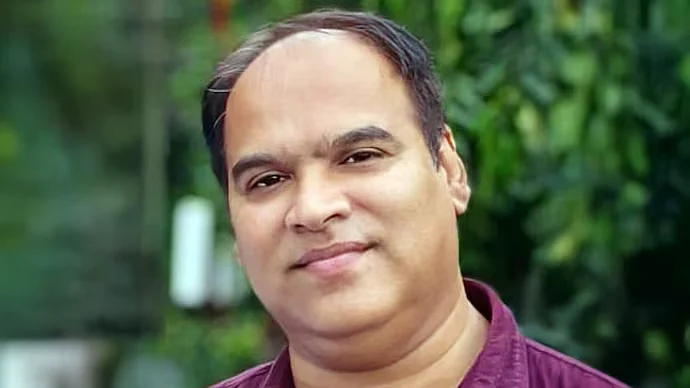Madhya Pradesh Chief Minister Shivraj Singh Chouhan recently referred to Prime Minister Narendra Modi as ‘Kalpavriksha’ (wish-fulfilling tree) and ‘Bhagiratha’ (bringer of the river). It wasn’t sycophancy so much as an acknowledgement of the importance of Brand Modi in the Bharatiya Janata Party’s scheme of things.
That was the one big takeaway from 2022; the party started and ended the year with grand successes in state elections, in which Mr Modi played a crucial part. Now, with nine Assembly elections to go before the grand finale of the Lok Sabha polls in 2024, the burden of carrying the party falls on him yet again.
Thus, we have the central Government in overdrive, looking to fill up 10 lakh vacancies, ensure delivery of public services and entitlements and speed up implementation of critical schemes such as GatiShakti (for transport infrastructure), the India Semiconductor Mission and the Oilseeds Mission, thereby presenting a dynamic and reassuring picture of a country on the move. Accordingly, ministers and senior bureaucrats have been asked to pull up their socks.
Of course, the electoral machinery supervised by Home Minister Amit Shah is critical in translating Mr Modi’s charisma into votes. On that front, work has already started keeping the 2024 general elections in mind, with meetings of office-bearers at various levels being called and committees appointed. With characteristic efficiency, there is a strong focus on the 160 constituencies which the BJP perceives as shaky. Special attention is being given to the 144 seats where it had lost in 2019. Suitably trained full-time workers or ‘vistaraks’ have already been embedded in most of these seats, and tasked with the all-important job of booth management. The process will gather force in the months to come, alongside preparations for the Assembly elections in Karnataka, Madhya Pradesh, Chhattisgarh, Telangana, Rajasthan and the Northeast.
Internal surveys conducted by the BJP in poll-bound states have not been encouraging, with the approval ratings of its CMs lower than that of the central leadership. Unlike Gujarat, there is a palpable anti-incumbency factor at play in Karnataka and MP. The CMs of both states are mid-term appointees; Basavaraj Bommai took over from B S Yediyurappa in 2021 and Shivraj Singh Chouhan succeeded the Congress incumbent in 2020. Hence, the dependence on the PM.
Brand Modi, which exemplifies the potent combination of a nationalist ideology and economic development, seems to be as strong as ever. In state after state, the Modi factor is becoming more rather than less important. UP CM Yogi Adityanath may be a vote-catcher in his own right, but in Uttarakhand, it was the PM alone who turned the tables on the Congress. In Gujarat, the massive mandate received by the BJP was, without a shadow of doubt, a vote of confidence in Mr Modi.
To what extent can the PM trump anti-incumbency in the states? Himachal Pradesh fell to the Congress last year, despite his whirlwind rallies over four days in November. At the time, the Modi-Shah focus was naturally on Gujarat which has 26 Lok Sabha seats to Himachal’s four. Whether a more sustained campaign would have made a difference remains a question mark, given the lacklustre record of the erstwhile BJP Government in the state.
As of now, matters have been complicated by Rahul Gandhi’s Bharat Jodo Yatra, which has evoked a good response in the election-bound states. It is difficult to assess whether the Congress MP’s long march will rejuvenate the grand old party or translate into votes, because 2024 is still a long way off. But it could have an impact on the Assembly elections in 2023, particularly in Karnataka and Madhya Pradesh.
For the BJP, the advantages of turning every state election into a presidential contest between Mr Modi and Mr Gandhi are manifest. As the latter himself acknowledged, Opposition unity is not enough, what’s needed is a counter-narrative to Mr Modi. Mr Gandhi has belatedly realised that taking on the architect of ‘Naya Bharat’ requires an alternative vision, but neither he nor his advisers have been able to conjure up anything remotely as powerful. So the Congress will strive to avoid a face-off between the two, letting the state leadership take the lead.
In Karnataka, the BJP is likely to play up Brand Modi in the Vokkaliga belt, where it has traditionally been weak. The community is dominant in the Old Mysuru region and second only to the Lingayats in terms of electoral influence. Likewise, Chouhan hopes the combination of his own affable ‘mama’ (uncle) persona and Modi magic can be parleyed into a fifth term.
At some point, and probably sooner rather than later, the PM will choose to retire. It’s high time that the RSS began building up a robust second line of leadership, particularly in the states, to give the PM a break from electioneering and prepare for the future.
Bhavdeep Kang is a senior journalist with 35 years of experience in working with major newspapers and magazines. She is now an independent writer and author










